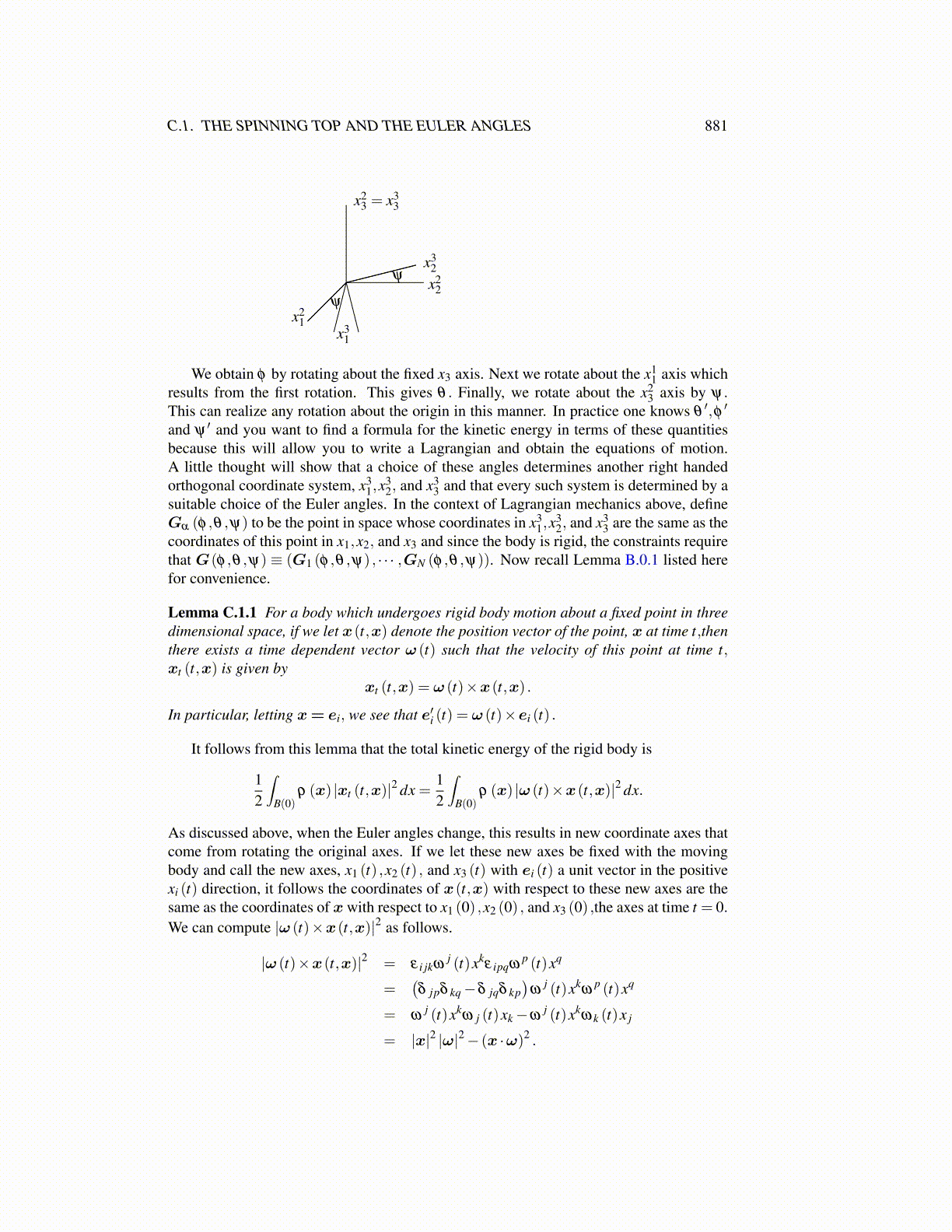
C.1. THE SPINNING TOP AND THE EULER ANGLES 881
ψ
ψ
x23 = x3
3
x21
x31
x22
x32
We obtain φ by rotating about the fixed x3 axis. Next we rotate about the x11 axis which
results from the first rotation. This gives θ . Finally, we rotate about the x23 axis by ψ.
This can realize any rotation about the origin in this manner. In practice one knows θ′,φ ′
and ψ ′ and you want to find a formula for the kinetic energy in terms of these quantitiesbecause this will allow you to write a Lagrangian and obtain the equations of motion.A little thought will show that a choice of these angles determines another right handedorthogonal coordinate system, x3
1,x32, and x3
3 and that every such system is determined by asuitable choice of the Euler angles. In the context of Lagrangian mechanics above, defineGα (φ ,θ ,ψ) to be the point in space whose coordinates in x3
1,x32, and x3
3 are the same as thecoordinates of this point in x1,x2, and x3 and since the body is rigid, the constraints requirethat G(φ ,θ ,ψ) ≡ (G1 (φ ,θ ,ψ) , · · · ,GN (φ ,θ ,ψ)). Now recall Lemma B.0.1 listed herefor convenience.
Lemma C.1.1 For a body which undergoes rigid body motion about a fixed point in threedimensional space, if we let x(t,x) denote the position vector of the point, x at time t,thenthere exists a time dependent vector ω (t) such that the velocity of this point at time t,xt (t,x) is given by
xt (t,x) = ω (t)×x(t,x) .
In particular, letting x= ei, we see that e′i (t) = ω (t)×ei (t) .
It follows from this lemma that the total kinetic energy of the rigid body is
12
∫B(0)
ρ (x) |xt (t,x)|2 dx =12
∫B(0)
ρ (x) |ω (t)×x(t,x)|2 dx.
As discussed above, when the Euler angles change, this results in new coordinate axes thatcome from rotating the original axes. If we let these new axes be fixed with the movingbody and call the new axes, x1 (t) ,x2 (t) , and x3 (t) with ei (t) a unit vector in the positivexi (t) direction, it follows the coordinates of x(t,x) with respect to these new axes are thesame as the coordinates of x with respect to x1 (0) ,x2 (0) , and x3 (0) ,the axes at time t = 0.We can compute |ω (t)×x(t,x)|2 as follows.
|ω (t)×x(t,x)|2 = ε i jkωj (t)xk
ε ipqωp (t)xq
=(δ jpδ kq−δ jqδ kp
)ω
j (t)xkω
p (t)xq
= ωj (t)xk
ω j (t)xk−ωj (t)xk
ωk (t)x j
= |x|2 |ω|2− (x ·ω)2 .